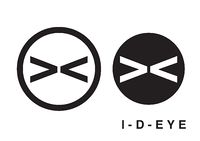Children, Data and Emerging Identities: Difference between revisions
No edit summary |
No edit summary |
||
| Line 48: | Line 48: | ||
[[Category:Future Worlds Center Projects]] | [[Category:Future Worlds Center Projects]] | ||
[[Category:JLS Projects]] | |||
[[Category:EU Projects]] | |||
Revision as of 05:41, 20 October 2011
|
The project Children, Data and Emerging Identities concerns the development of an augmented reality game in which different sets of data, both active and passive, lead to different outcomes as symbolized by signs. These different signs will be printed by children as an outcome of a stage in the game and will shown to a computer camera. Then, on their computer screen, the augmented reality translation of the signs will be shown. This translation represents the identity that emerges from the data they have entered in the course of the game. By playing the game children will learn that not providing any data or providing only a small amount of data leads to either a complete lack of representation or a distorted representation while providing of too many validated data will lead to a truthful representation. The proposal involves 4 partners from 3 countries (Cyprus, The Netherlands, and the U.K.).
Overall Objectives
The general goal of the project is not to prevent children from using the Internet or specific sites, but to make them aware of the risks of sharing personal information online and to encourage them to control their online identity by thinking carefully about the consequences.
The project aims to teach children the value of data, how to represent themselves online, how to be careful with handing out data and how to interpret data they encounter on the Internet. The game should help them to protect themselves against theft of their identity and against contact with an unwanted third person.
Specific Objectives
- Core findings regarding children’s and parents’ experiences of online technologies, focused on comparisons of children’s and parents’ perceptions of and practices regarding online risk and safety.
- Patterns of risk and safety online to be identified following top-down hypothesis testing and bottom-up exploration of relationships among different variables, conducted on a cross-national basis.
- Evidence-based policy and research recommendations
- Act as node of awareness network in the Netherlands, the U.K. and Cyprus
- Devise a cohesive, hard-hitting and targeted awareness campaign using the most appropriate media, taking into account best practice and experience in other countries.
- Establish and maintain a partnership (formal or informal) with key players (government agencies, press and media groups, ISP associations, users organisations, education stakeholders) and actions in their country relating to safer use of Internet and new media.
- Promote dialogue and exchange of information notably between stakeholders from the education and technological fields.
- Actively cooperate with other national nodes in the European network by exchanging information about best practices, participating in meetings and designing and implementing a European approach, adapted as necessary for national linguistic and cultural preferences.
References
